
Sudden paralysis on one side of the body can afflict anyone. This reality is increasing demand for a particular kind of robot.

“I was eating with my wife when, all of a sudden, I couldn’t move my arm or let go of the bowl…”
Just two years into retirement, Toshihiko Nagai suffered a stroke that left him partially paralyzed. Despite a month of diligent rehabilitation, he showed no signs of recovery. “I resigned myself to being in a wheelchair for the rest of my life,” he says.
A staggering 794 strokes suffered every day
Stroke is one of the three major diseases among Japanese people. The number of new cases, including recurrent strokes, is said to reach 290,000 annually. This equates to a staggering 794 people suffering strokes each day.
Looking at these figures, it’s clear that anyone is susceptible. That is exactly why it’s so important to understand the emotional journey and rehabilitation that stroke victims go through.
So, what can Toyota do for those with partial paralysis who are striving toward recovery? In this article, we take an in-depth look at the company’s rehabilitation assistance robot.

For most people, walking offers the most fundamental opportunity for mobility. This is what spurred Toyota to begin developing the robot in 2007. Since its launch, the company has continued to make improvements in collaboration with Professor Eiichi Saito, the current Chief Advisor at Fujita Health University and an authority on rehabilitation medicine.
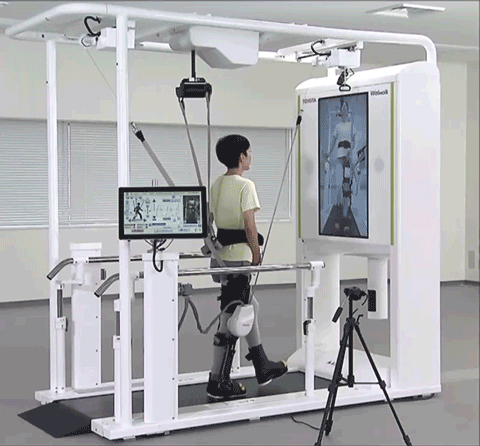
As the video shows, the robot assists the movements of impaired legs while the monitor displays information to help the user walk on their own. We also showcased the technology in a past article.
As of December 2024, Toyota’s robots are in use at 105 hospitals and other facilities around Japan. Toshihiko Nagai, whose story we introduced at the top of the article, is now undergoing rehabilitation at Fujita Health University Nanakuri Memorial Hospital in Tsu, Mie Prefecture. We asked him about those initial days.
“In the ambulance, I realized that I couldn’t move the left side of my body. This after walking an hour every morning to stay in shape…”
Even after continued rehabilitation, Nagai could not walk normally. Then he began walking exercises with the assistance robot.
“My first impression was not great. It was forcing me to move, and I was skeptical that it would really help me to walk on my own.”
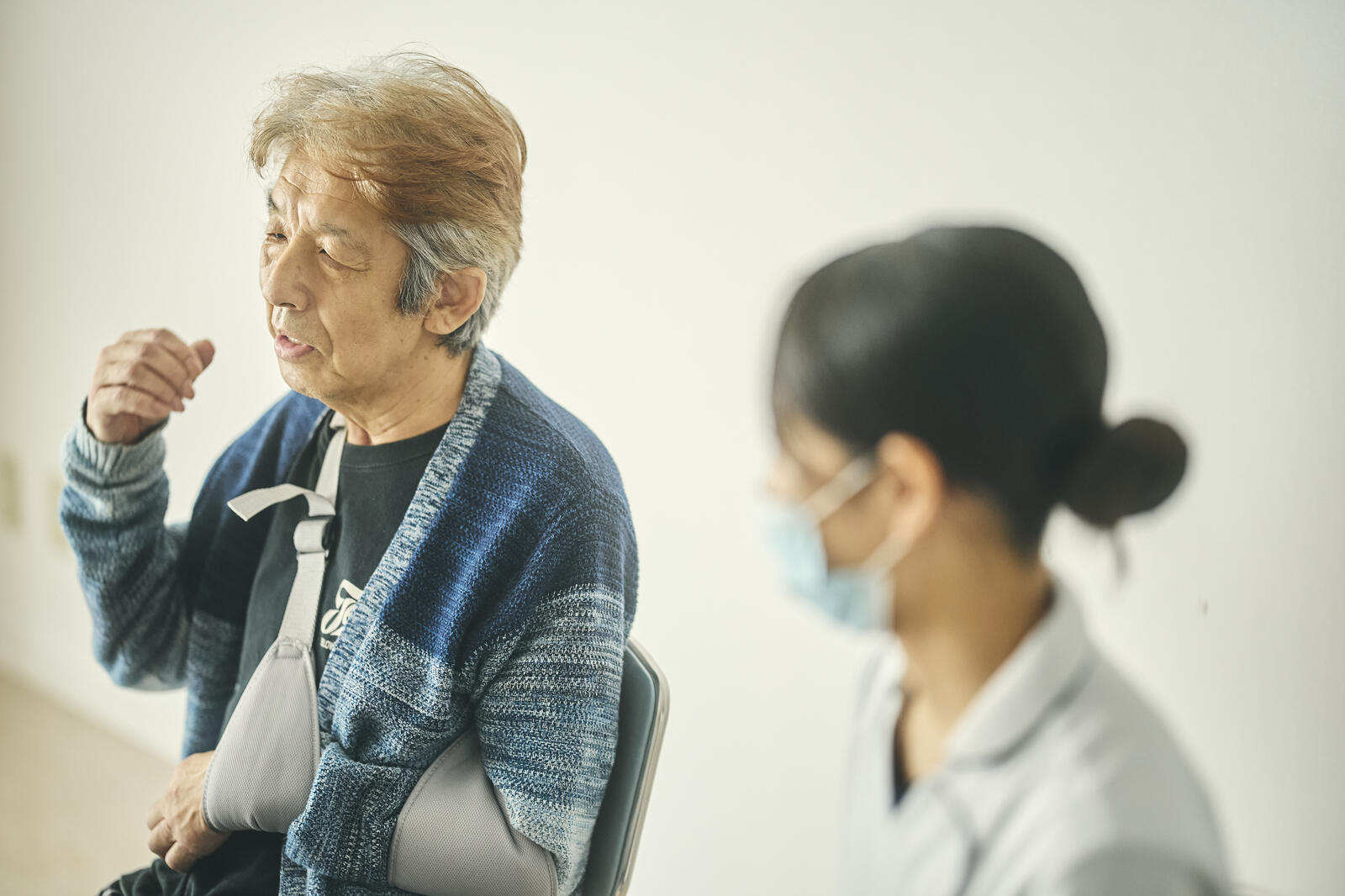
In standard walking exercises, a brace immobilizes the knee and ankle, and a physical therapist helps the patient move while supporting their weight from behind. The therapist’s full effort is needed just to assist with walking.
By contrast, the robot supports the patient’s trunk via a hanging harness and assists them with lifting the leg and bending the knee, allowing the therapist to keep an eye on finer details.
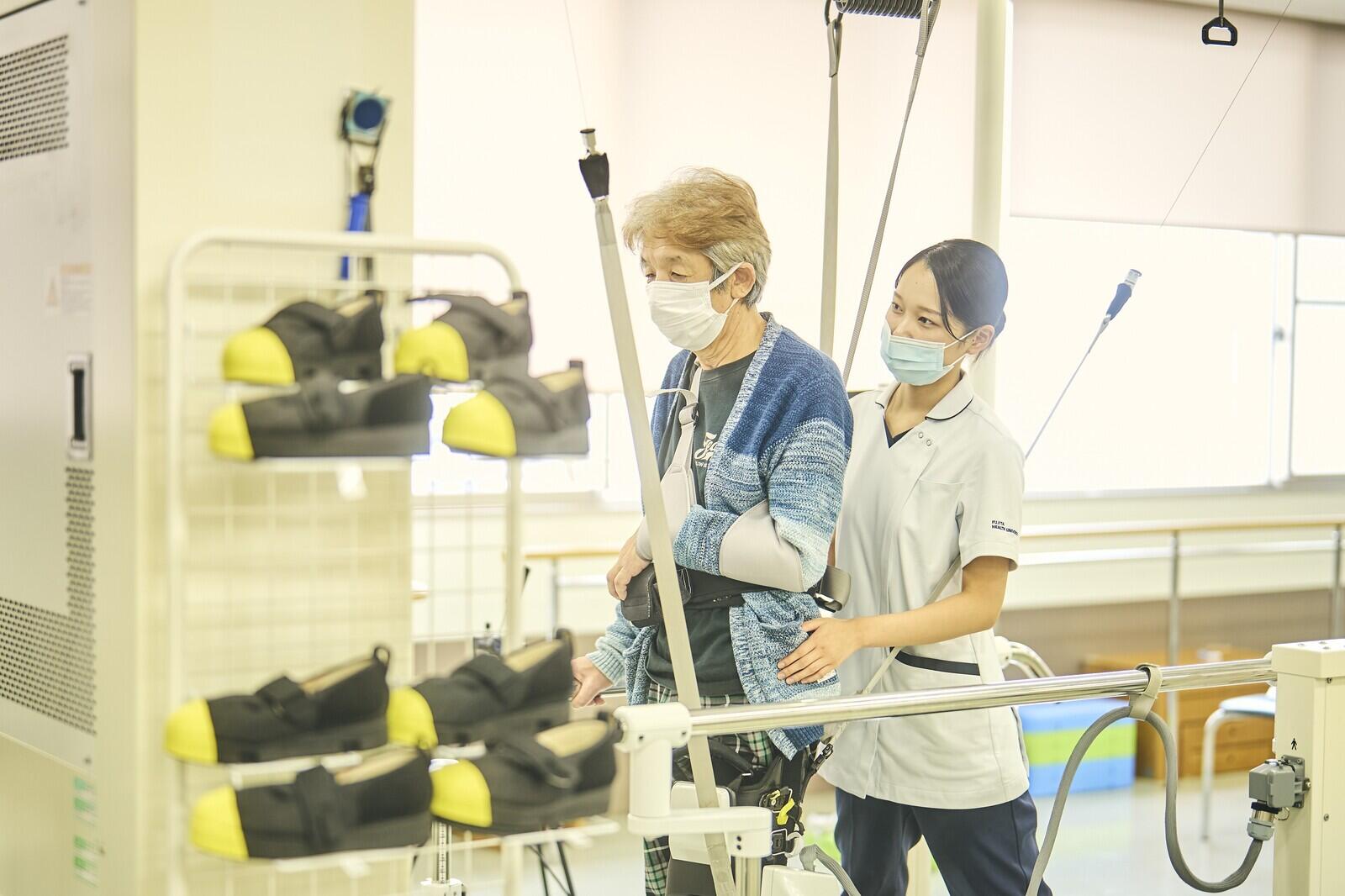
“I think it was about a week after I started using it. Little by little, I came to think that I might be able to walk again.”
The monitor shows the patient as they walk, along with real-time information such as where the load is being applied on the paralyzed foot. Users can observe how well they are doing, making it easy to identify points for improvement.
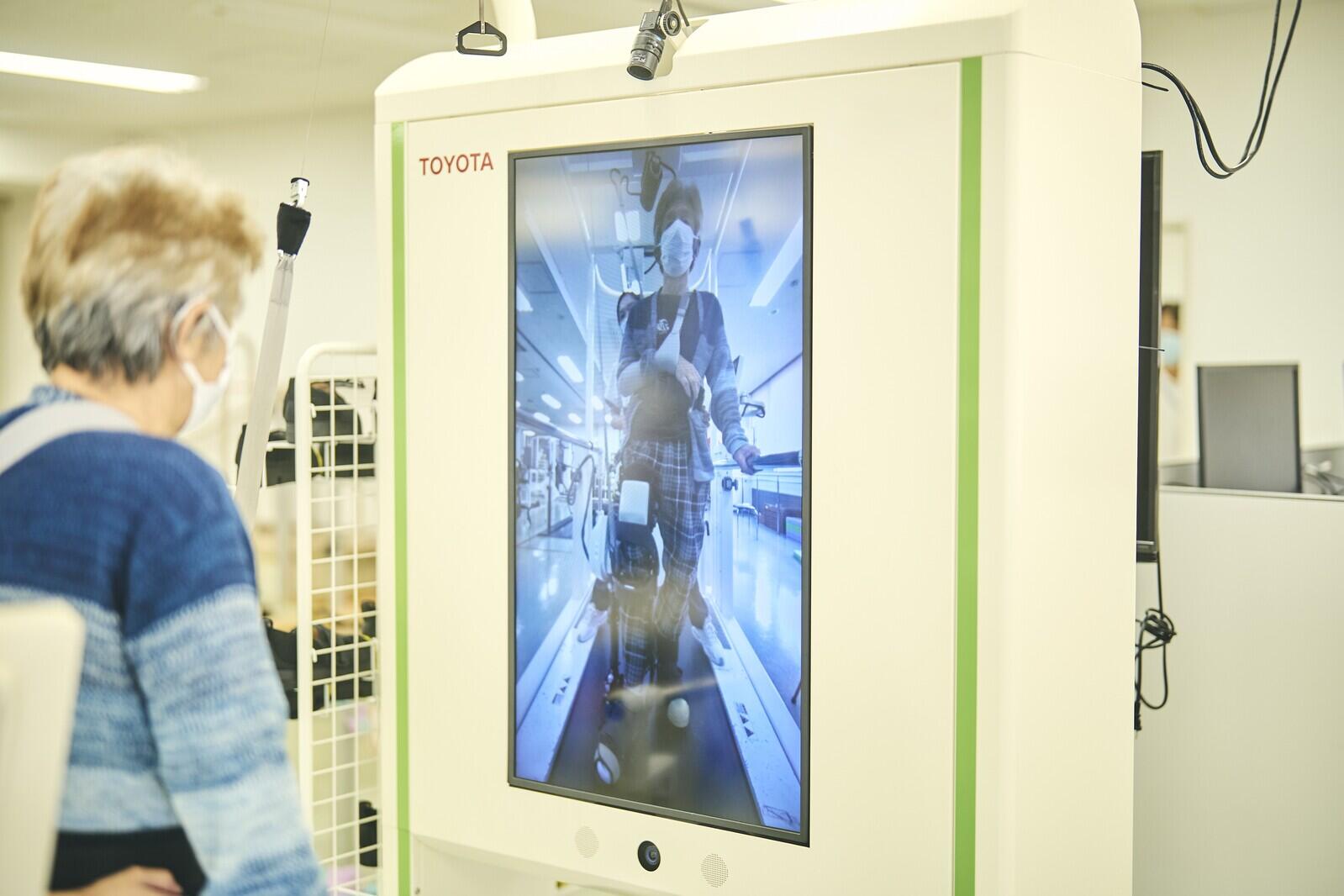
“The first time I watched myself on the screen, it was awful. My body was swaying, my right shoulder was drooping, and I was hunched over. I could instantly see that I wasn’t walking right.
“I was able to think, ‘I should turn my foot outward a little as I step.’ Before using the robot, I was so desperately focused on walking that I couldn’t think about anything else.”
“I think the drive to think through the exercises for himself is the reason behind his improvement,” says Higashi, a physical therapist who provides rehabilitation support.

Before his stroke, when heading out, Nagai would often stride off until his wife chided him to slow down. Now, during hospital visits, they take walks together, and each time she is astonished by his progress.
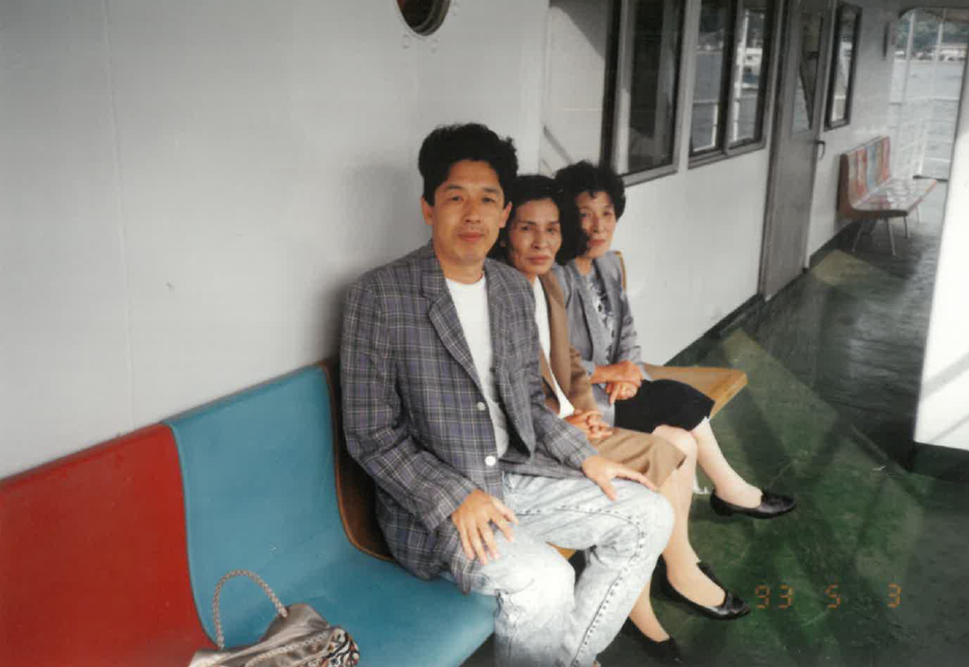
Indoors, Nagai can now walk 800 meters with a cane; the next goal is to be able to walk safely outside on his own.
“I would love to stroll around the neighborhood park where I used to walk every morning. And go to the convenience store in front of our house, or to have a meal at the fast-food place 200 meters down the road (laughs).”
Nagai is eager to regain the daily life he had taken for granted. He is also practicing driving a car again and hopes to return to the Ise-Shima region he used to visit frequently.
“But after I park the car, it will be a whole lot of walking again (laughs).”
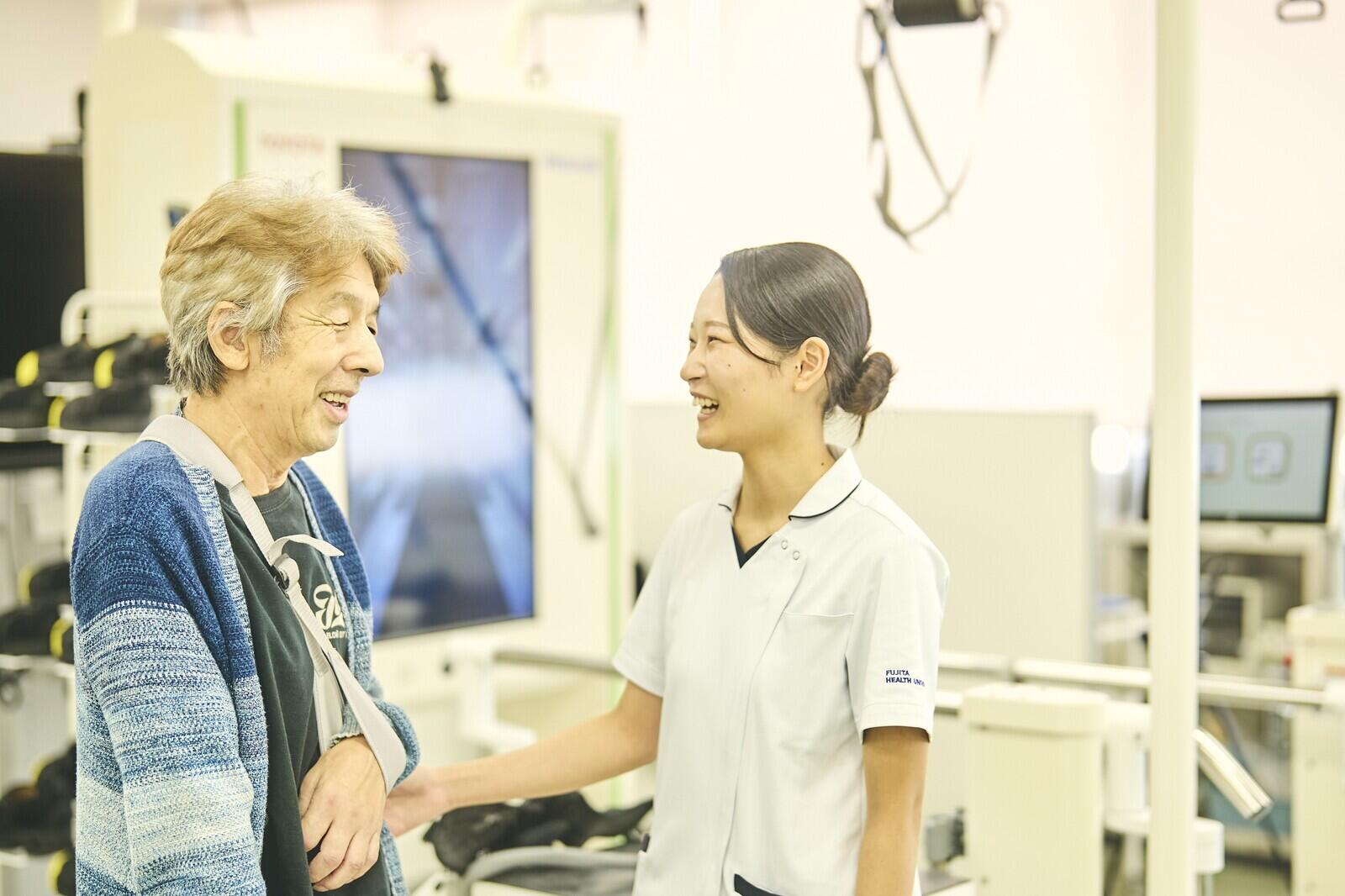
Nagai smiled as he talked, and the faces of the doctors and therapists also lit up.
Three years ago, Toyota Times shared the story of another patient, Masami Urata. Today, she is still going strong and commuting to work on her own.
“This robot was a miraculous tool that picked me up from rock bottom,” she told us. “These days I’m able to frequently wear heels, although I still use a cane.”


